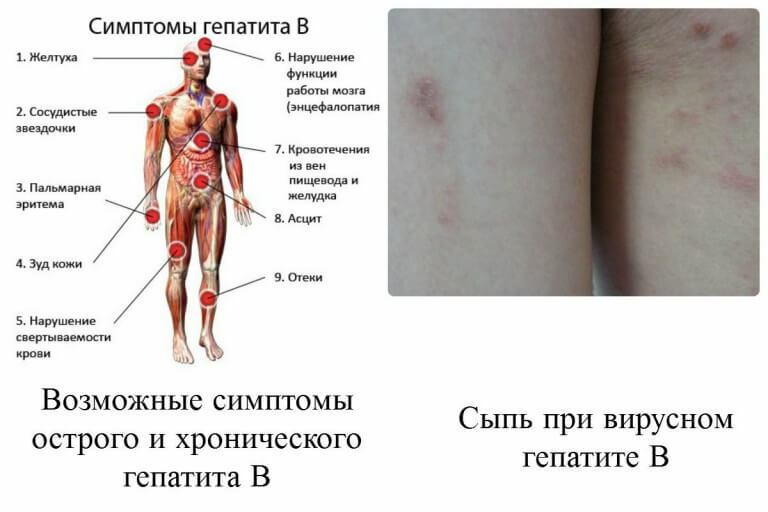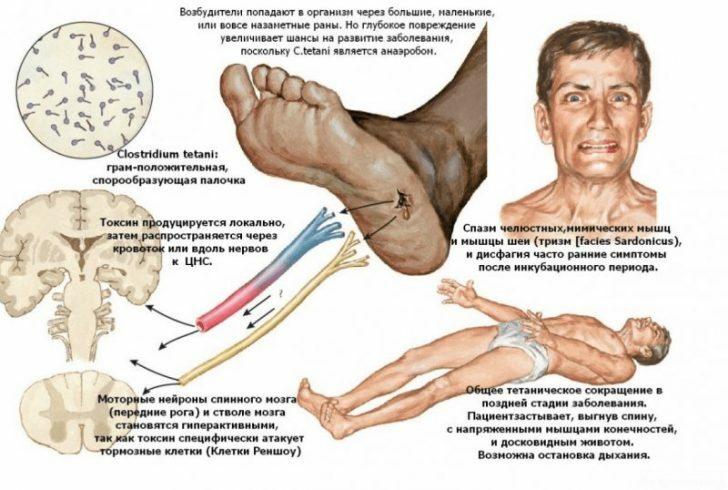Rheumatoid arthritis
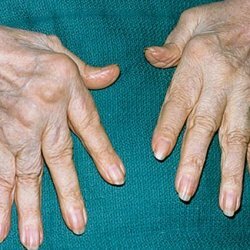 This article describes how rheumatoid arthritis develops, how it is treated, and what patients can do to help themselves cope with their disease.
This article describes how rheumatoid arthritis develops, how it is treated, and what patients can do to help themselves cope with their disease.
Features of rheumatoid arthritis
Rheumatoid arthritis is an inflammatory disease that causes pain, swelling, immobility and loss of function in the joints. It has several characteristics that distinguish it from other types of arthritis. For example, rheumatoid arthritis is characterized as a symmetrical pattern. This means that if one knee or hand is hit, then the other too. The disease often affects the joints and wrists, the joints of the fingers are closer to the arm. It can also affect other parts of the body, except the joints. People with this disease feel fatigue, sometimes a fever and a general feeling of ill-health.
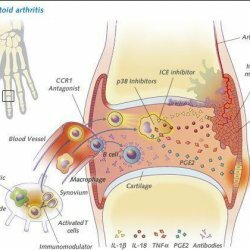 Another feature of rheumatoid arthritis is that it varies greatly from person to person. For some people, it only lasts a few months or a year or two and leaves without causing any noticeable damage. Other people suffer from mild or moderate illness, with periods of exacerbation of symptoms called outbreaks, and periods in which they feel better, called remission. The latter suffer from a serious illness that is active, in most cases lasts for many years, leading to serious damage to the joints and disability.
Another feature of rheumatoid arthritis is that it varies greatly from person to person. For some people, it only lasts a few months or a year or two and leaves without causing any noticeable damage. Other people suffer from mild or moderate illness, with periods of exacerbation of symptoms called outbreaks, and periods in which they feel better, called remission. The latter suffer from a serious illness that is active, in most cases lasts for many years, leading to serious damage to the joints and disability.
Although rheumatoid arthritis can have serious consequences for a person's life and well-being, the current treatment strategies - including the alleviation of pain and other medications, the balance between rest, exercise, patient education - allow most people with this disease to lead an active and productive wayLife.
How rheumatoid arthritis develops
Joints .The normal joint is surrounded by an articular capsule that protects and supports it. The cartilage covers the cushions and the ends of the two bones. Transparent liquid lubricates and nourishes the cartilage and bones inside the joint capsule.
In rheumatoid arthritis, the immune system attacks, for unknown reasons, its own human cells inside the joint capsule. White blood cells, which are part of the normal immune system, reach the synovium and cause a reaction. This reaction, or inflammation, is called synovitis, which leads to redness, edema and pain - typical symptoms of rheumatoid arthritis. The inflammatory process of cells of the synovial membrane grows and the cells divide abnormally, which makes the thin synovial membranes thick, swollen and plump to the touch.
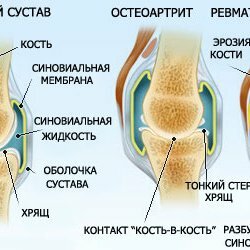 Rheumatoid arthritis progresses, and these abnormal cells begin to invade and destroy cartilage and bones in the joint. The surrounding muscles, ligaments and tendons that support the joint become weak and unable to function normally. All these effects lead to pain and deformation.
Rheumatoid arthritis progresses, and these abnormal cells begin to invade and destroy cartilage and bones in the joint. The surrounding muscles, ligaments and tendons that support the joint become weak and unable to function normally. All these effects lead to pain and deformation.
Other body parts. Some people experience the effect of rheumatoid arthritis in other places, except the joints. Rheumatoid nodules are bumps under the skin, which are similar in shape to the shape of the joints. Many people suffering from rheumatoid arthritis develop anemia or a decrease in the normal amount of red blood cells. Other effects that occur less frequently include neck pain, dry eyes and mouth.
Diagnosis. Rheumatoid arthritis is difficult to diagnose in the early stages for several reasons. First, there is no single test for the disease. In addition, the symptoms vary from person to person and may be more severe in some people than in others. In addition, the symptoms may be similar to other types of arthritis. Finally, for a long time a full range of symptoms develops, and only a few symptoms can be in the early stages.
Case History: This is a description of a person's symptoms when and how they started. Good communication between the patient and the doctor. For example, the description of the pain, stiffness and function of the joints, how they change over time, this is critical for the initial assessment of the doctor's disease.
Treatment of rheumatoid arthritis
Treatment. Doctors use a variety of approaches to treat rheumatoid arthritis. In different combinations, at different times, during the course of the illness, treatment is selected depending on the situation of the patient. Regardless of what treatment the doctor and patient choose, the goals are the same: reduce pain, relieve inflammation, slow or stop damage to the joints, and improve the person's well-being and ability to function.
Lifestyle. This approach includes a number of activities that help improve a person's ability to function independently and maintain a positive mood.
Recreation and exercise. Rest helps reduce active joint inflammation, pain and fatigue. The time required for recreation will vary from person to person, but in general, shorter rest breaks are more useful than a long time in bed.
Exercise is important for maintaining healthy and strong muscles, maintaining joint mobility and maintaining flexibility. Exercises can help people sleep peacefully, reduce pain, maintain a positive attitude and lose weight. Exercises should be planned and implemented taking into account the physical capabilities of the person.
Joint care. The use of tires helps relieve pain and swelling.
Healthy diet. There is no scientific evidence that any particular food or nutrients help or harm most people with rheumatoid arthritis. However, a general nutritional diet is very important. Some people should be careful about drinking alcoholic beverages because of medications.
Climate. Some people notice that their arthritis is getting worse when there is a sudden change in the weather. However, there is no evidence that a specific climate can prevent or reduce the effects of rheumatoid arthritis. Moving to a new location, with a different climate, usually does not make a difference in rheumatoid arthritis rights.

